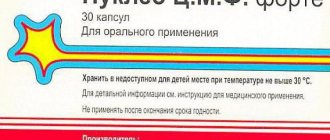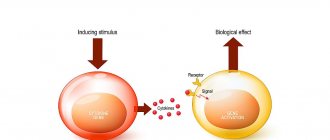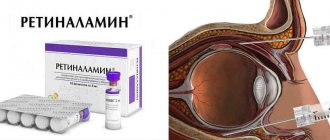Fluimucil antibiotic IT lyof.d/r-ra d/in and inhal.500mg bottle with solution N3
Registration Certificate Holder
ZAMBON (Italy)
Dosage form
Medicine - Fluimucil®-Antibiotic IT (Fluimucil-Antibiotic IT)
Description
Lyophilisate for the preparation of solution for injection and inhalation
1 fl.
thiamphenicol glycinate acetylcysteinate 810 mg, including thiamphenicol 500 mg
Excipients
: disodium edetate.
Solvent:
water d/i (4 ml).
810 mg - bottles (3) complete with solvent (amp. 3 pcs.) - plastic trays (1) - cardboard packs.
Indications
- diseases of the upper respiratory tract and ENT organs: exudative otitis media, sinusitis, laryngotracheitis;
- diseases of the lower respiratory tract: acute and chronic bronchitis, prolonged pneumonia, lung abscess, emphysema, bronchiectasis, cystic fibrosis, bronchiolitis, whooping cough;
- prevention and treatment of bronchopulmonary complications after thoracic surgery (bronchopneumonia, atelectasis);
- prevention and treatment of obstructive and infectious complications of tracheostomy, preparation for bronchoscopy, bronchoaspiration;
- with concomitant nonspecific forms of respiratory infections to improve drainage, including cavernous lesions, with mycobacterial infections.
Contraindications for use
- anemia;
- leukopenia;
- thrombocytopenia;
- hypersensitivity to one of the components of the drug.
Carefully:
with liver failure and chronic renal failure. In children of the first two years of life due to age-related characteristics of kidney function.
pharmachologic effect
Thiamphenicol glycinate acetylcysteinate is a complex compound that combines the antibiotic thiamphenicol and the mucolytic acetylcysteine. After absorption of thiaminephenicol, glycinate acetylcysteinate is split into acetylcysteine and thiamphenicol. Thiamphenicol is a derivative of chloramphenicol, the mechanism of action is associated with inhibition of bacterial cell protein synthesis. Thiamphenicol has a wide spectrum of antibacterial action and is effective in vitro against bacteria that most often cause respiratory tract infections: gram-positive (Streptococcus pneumoniae, Corynebacterium diphtheriae, Staphylococcus spp., Streptococcus pyogenes, Listeria spp., Clostridium spp.) and gram-negative (Haemophilus influenzae, Neisseria spp., Salmonella spp., Escherichia coli, Shigella spp., Bordetella pertussis, Yersinia pestis, Brucella spp., Bacteroides spp.).
Acetylcysteine, by breaking the disulfide bonds of mucoproteins, quickly and effectively dilutes sputum and pus, reduces their viscosity and promotes discharge. Acetylcysteine facilitates the penetration of the antibiotic thiamphenicol into lung tissue and inhibits the adhesion of bacteria to the epithelium of the respiratory tract.
Drug interactions
The simultaneous administration of antitussives may increase sputum stagnation due to suppression of the cough reflex. It is not recommended to mix with other aerosol medications.
Dosage regimen
Fluimucil® antibiotic IT is administered intramuscularly and used for inhalation, application, and cavity rinsing.
Inhalation:
adults
- 250 mg 1-2 times a day;
children
- 125 mg 1-2 times a day.
Endotracheal:
through a bronchoscope, endotracheal tube, tracheostomy - 1-2 ml of solution (for adults, dissolve in 4 ml of water for injection - 500 mg of dry matter, for children - 250 mg).
Local:
for administration into the paranasal sinuses, as well as for washing cavities after surgical interventions in the area of the nose and mastoid process, 1-2 ml of solution (
for adults
, dissolved in 4 ml of water for injection - 500 mg of dry matter,
for children
- 250 mg).
For diseases of the nasopharynx and ear, instill 2-4 drops into each nasal passage or external auditory canal.
Intramuscularly:
adults
- 500 mg 2-3 times a day;
children under 3 years old
- 125 mg 2 times a day;
3-7 years
- 250 mg 2 times a day;
7-12 years
- 250 mg 3 times a day.
For premature and newborn babies up to 2 weeks,
the average dose is 25 mg/kg per day.
If necessary, the dose can be increased by 2 times (in the first 2-3 days of treatment in particularly severe cases). Do not increase the dose in premature and newborn children, as well as in patients over 65 years of age. The course of treatment is no more than 10 days.
Overdose
Symptoms:
change in bacterial flora, superinfection. It is possible that the side effects of the drug may increase (with the exception of allergic reactions).
Maintenance therapy is recommended.
Side effect
Allergic reactions.
With intramuscular administration, a slight burning sensation at the injection site is possible, rarely - reticulocytopenia, anemia, leukopenia, neutropenia, thrombocytopenia.
With inhalation administration - reflex cough, local irritation of the respiratory tract, stomatitis, rhinitis, nausea. Bronchospasm is possible, in which case bronchodilators are prescribed.
special instructions
During treatment, peripheral blood patterns should be monitored. If the number of leukocytes (less than 4 thousand/μl) and granulocytes (by more than 40%) decreases, the drug is discontinued.
Fluimucil IT antibiotic solution should not come into contact with metal and rubber surfaces.
Fluimucil® antibiotic IT does not affect the ability to drive vehicles and other mechanisms.
Storage conditions
At temperatures from 15°C to 25°C. Keep out of the reach of children.
Best before date
Shelf life: lyophilisate for the preparation of solution for injection and inhalation 500 mg (bottles) - 3 years; solvent: water for injection (ampoules) - 5 years; set - 3 years.
Note: The expiration date of the kit is determined by the component with the shortest expiration date.
Use during pregnancy and breastfeeding
Restrictions during pregnancy - With caution. Restrictions when breastfeeding - Contraindicated.
During pregnancy, the drug is prescribed only when the potential benefit to the mother outweighs the potential risk to the fetus.
If it is necessary to prescribe the drug during lactation, breastfeeding should be stopped during treatment.
Use for renal impairment
Restrictions for impaired renal function - With caution.
With caution in chronic renal failure.
Use for liver dysfunction
Restrictions for liver dysfunction - With caution. With caution for liver failure.
Use in elderly patients
Restrictions for elderly patients - Use with caution.
Do not increase the dose in patients over 65 years of age
Use in children
Restrictions for children - With caution.
With caution in children of the first two years of life due to age-related characteristics of kidney function.
Terms of sale
On prescription.
Contacts for inquiries
ZAMBON S.p.A. (Italy)
ZAMBON SpA
Representative office in Russia Zambon Pharma LLC 119002 Moscow, Glazovsky per. 7, off. 17 Tel.; Fax


